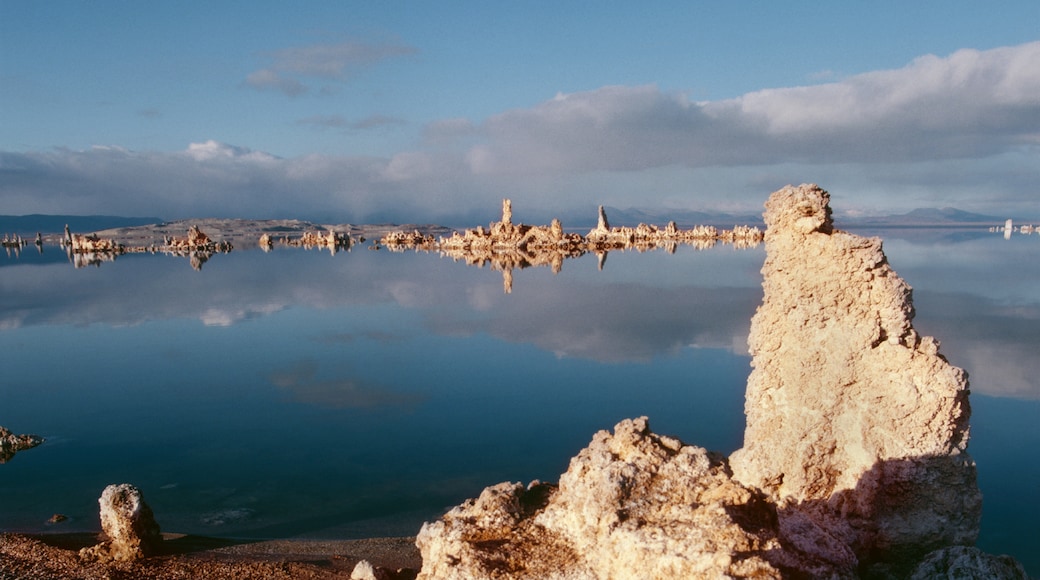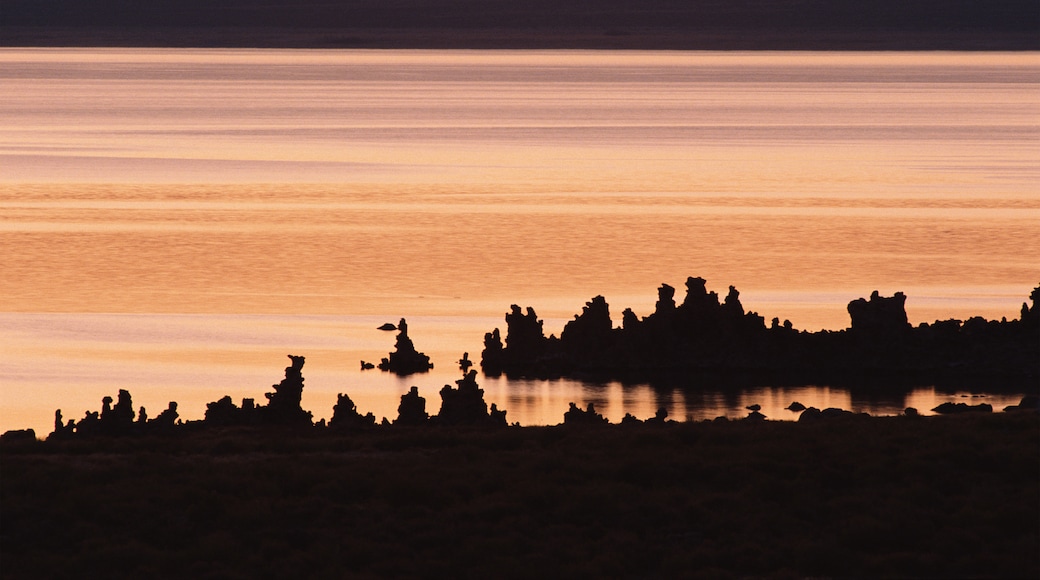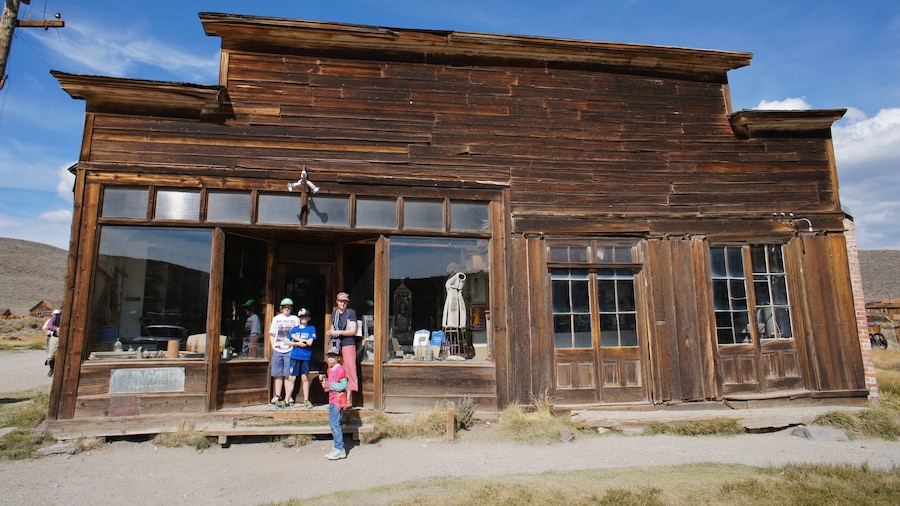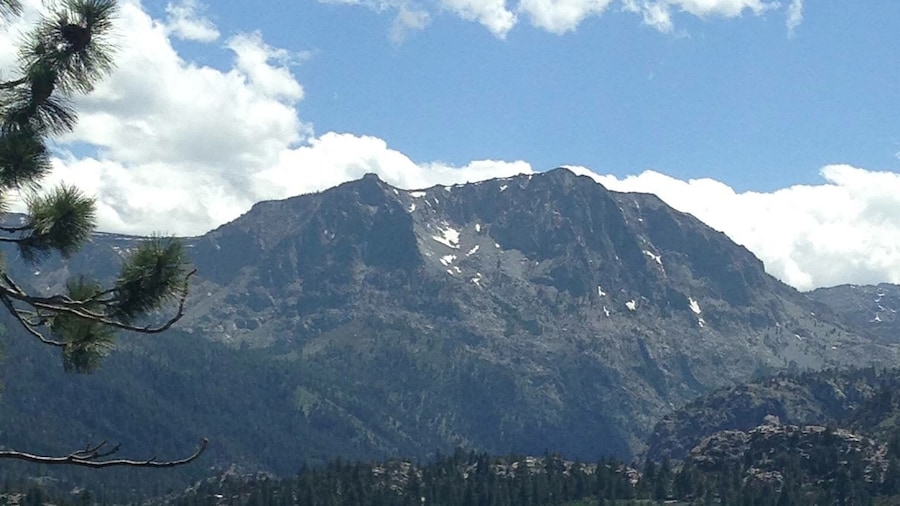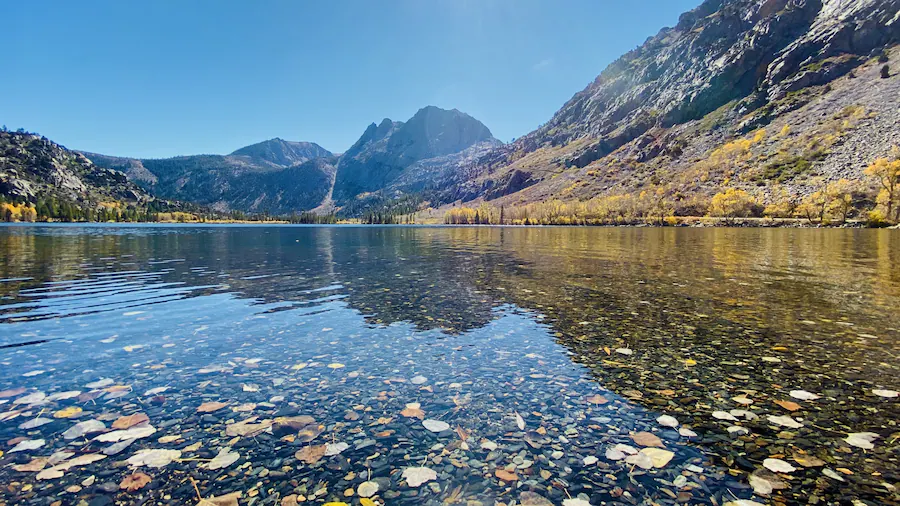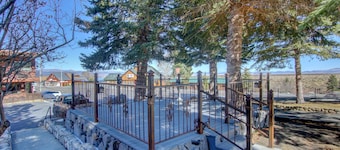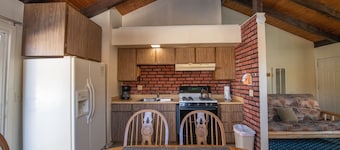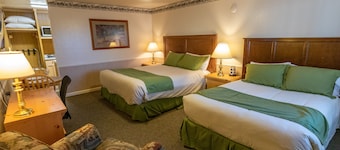Explore this saline lake, where you can sail in high winds, see stunning rock formations and watch over 2 million migrating birds that visit each year.
Take a daytrip to Mono Lake to experience the other-worldly geology and stunning wildlife populations that make up a high-saline water body. This lake was formed over 760,000 years ago in a salt-heavy basin, which nourished a thriving ecosystem of brine shrimp, insects and birds. Learn about the indigenous Americans who lived here, the Kutzadika’a people, whose staple food source was the lake’s insect pupae.
Visit Mono Lake Visitor Center to delve into the environmental history of the area. In 1941, lake water was diverted to the growing city of Los Angeles, dramatically dropping lake level. Subsequent restoration efforts have replenished Mono Lake to within 40 feet (12 meters) of its former level. Attend seminars and walks directed by naturalists to hear more about ongoing geological developments and regional wildlife.
See the lake’s stunning vistas on a hiking or boating tour. Experience is required for sailors, as submerged rocks and high winds create challenging conditions. Alternatively, explore Mono Lake on a kayak or canoe.
Stop at the tufa towers, a jagged rock outcrop that rises out of the salty water in intriguing shapes. Enjoy the best views from a designated boardwalk in the South Tufa portion of the state reserve, which features information boards explaining the fascinating geological formations in the area.
In summer, watch the lake come alive with over 2 million migratory birds who come to nest and feed on the plentiful brine shrimp. Take a birdwatching tour to spot over 35 species of shorebird, including American avocets and sandpipers.
In the evening, enjoy a grilled meal at a restaurant overlooking the lake in Lee Vining. Find accommodations here on the lake’s western border.
Mono Lake is located east of the Sierra Nevada mountain range in California. Get here via a 25-minute drive from Bridgeport. Stop at the visitor center to pay the admission fee for access to the lake.



